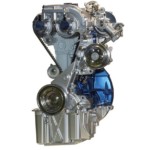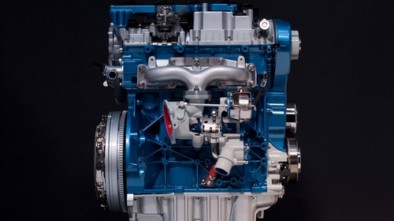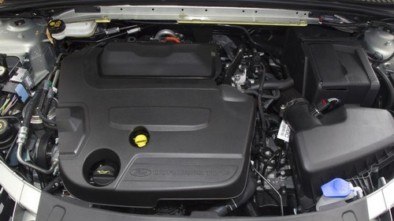Ford Capri 1968 - 1986 Model History
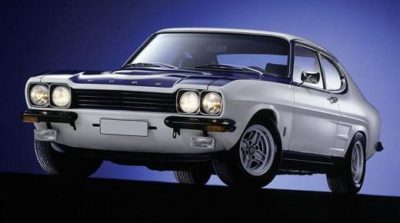
However, over the next ten years, the picture changed radically… In the early 1960s, an “order” came from the very top of the company to turn more to competitions and sports models, which were somewhat neglected. As part of the Total Performance Program, Ford participated in all relevant competitions on both sides of the ocean, and these efforts were crowned with a victory in LeMan with the GT40 (four times) and other major racetracks. Still, for the “civilian” market, representation Ford Mustang 1964 was the biggest event. The combination of excellent design, quality and reliable mechanics, as well as low prices with a rich list of options, was an absolute global hit, giving Ford great profits as well as impact.
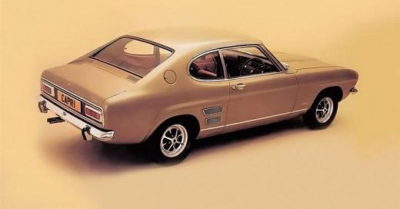
When Ford UK and Ford Germany merged into one company in the mid-1960s (at the express request of Henry Ford II), one of the envisaged common models was the project of a new sports coupe that would be what is in America the Mustang in America . Therefore, an affordable car that would appeal to all categories of the market, based on existing mechanics, therefore simple and inexpensive to manufacture. With an initial budget of £ 20m, a team of experts began work on the Colt project as early as 1965. Following the Mustang formula, the Cortine Mk II platform was taken and a new coupe was constructed on it.

During development, all Ford design centers, both in Europe and the United States, worked on the design, and several different prototypes were presented to the company's management. Development went smoothly and based on the first prototypes in 1966, the final decision was made to put it into production, and the public presentation was scheduled for 1968. Although the Ford Mustang was the absolute inspiration for this car, the designers, apart from the concept and formula - short tail "they did not take anything else from the American" cousin ". There was only one body shape (unlike the Mustang's three), and the "semi-fastback" coupe concept was taken as the final solution.
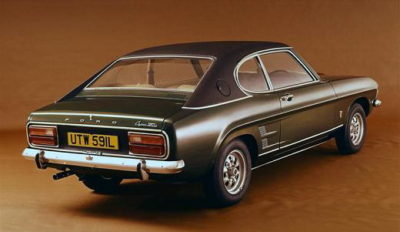
In January 1969, a press presentation was held in Cyprus, with an official premiere scheduled two weeks later at the Brussels Motor Show. At Ford's request, not a single journalist reported the news of the new coupe, and the presentation in Belgium was a hit, and it can be said, a big sensation on the then-European car scene. In front of a surprised audience, there was a beautiful and stylish coupe, harmonious lines, low silhouettes and almost "muscle" looks that European cars did not have before. The name Colt, which was carried by the project, was abandoned due to the already existing model of the same name brand Mitshubishi, and the name Capri (after the beautiful Italian island) was adopted. A relatively low price, as well as a long list of equipment and as many as eight motors on offer, were a good part of the attraction.
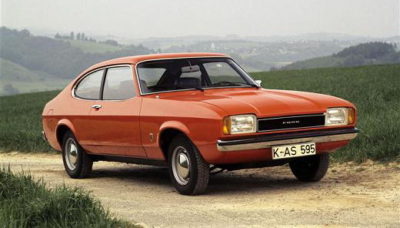
Namely, this way of presentation is a consequence of the influence of the American branch of Ford, which offered all its Mustang models at a relatively low price, but with a rich list of equipment. The drive was on the rear axle, and power was transmitted through a 4-speed manual transmission or 4-speed automatic transmission. Of particular interest was the choice of aggregates, which varied depending on the market and the parent plant. Therefore, the English Ford Capri manufactured at the Halewood factory had regular four-cylinder engines of 1.3, 1.6 and 2.0 liters, while the Capri models produced in Cologne or Genk (Belgium) had the famous Taunus V4 engines of 1.3, 1.5 and 1.7 liters. as the basis of the offer.
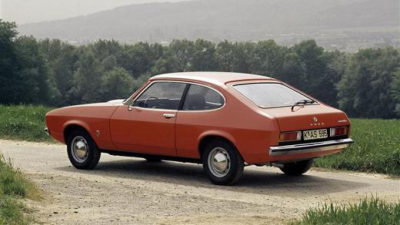
The second, more luxurious part of the offer was the same for all models and consisted of V6 aggregates of 2.0, 2.6 and 3.0 liters. The Ford Capri, positioned as such, was expected to attract a huge number of customers, so Ford sold a whopping 400000 Capri in the first year and a half, a success equal to the Mustang. Customers were very pleased with the look and feel of the Ford Capri, as well as the quality and motorization. In addition to its domestic competitor, Sunbeam Rapier and European counterparts Opel Manta and the Alfa Romeo GT Junior, Capri led the class of large-scale coupes.
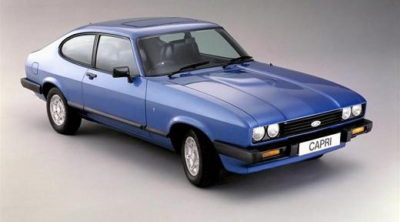
Of course, with its design and powerful engines, its racing career soon began, and already in the early 1970s, Ford Capri won first place in the then ETCC Championship, two years in a row (1971 and 1972). The winning version was a specially prepared Capri RS 2600 that fired 150hp with the help of the famous Kugelfischer injection. In 1973, the Ford Capri underwent its first redesign, and instead of four headlights, it got two larger light groups, a slightly modified front and rear appearance, and a smaller number of chrome body parts. In the same year, a millionth copy was produced, which was a great success for a car that spent barely three years on the market.
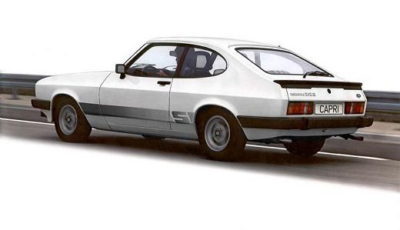
In addition to Europe, exports to the United States, South Africa, the Middle East and Australia (in which it will be produced later) are beginning. Although Capri's sales were still at a high level, the global recession and the oil crisis had their share of declining production. The racing career continued throughout this Mk II generation, with the famous Zakspeed Turbo Capri representing Ford's favorite "weapon" against the Porsche 930 and BMW 3.0 CSI in the former Group 8. Championships, however, sales were getting weaker and weaker, and Ford's response was is the Capri Mk III, the latest generation of this model, introduced in 1978.
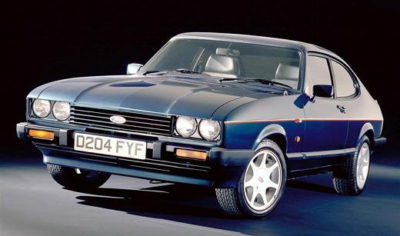
Although this was a thorough redesign, the Ford Capri Mk III was little more than that, because in addition to the new body, it had a new interior design, as well as new engines (2.8 with fuel injection) and plenty of new mechanical components. Wanting to keep this model interesting, Ford constantly dropped special equipment packages, pushing Capri into the GT segment. All changes in design have led to better aerodynamics, and the engine range has been reduced to 1.6 and 2.0 four-cylinder petrols and 2.8 and 3.0 V6 units. In 1981, the 3.0 V6 engine was out of the range and introduced the 2.8i, which had 160 hp, and came with a new five-speed manual transmission and an optional rear "Sper" differential (LSD).
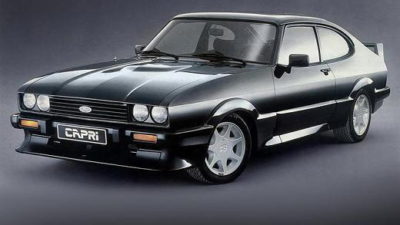
Many tuners saw this as their chance, and numerous turbo and atmospheric versions were introduced in the early 1980s, but even those failed to save the Ford Capri from losing interest. Since 1984, the Ford Capri has been sold only in England, and the final end of production occurred on December 19, 1986, after exactly 1886647 coupes were produced. There is no doubt that the Capri represented one of the most successful European Fords of all time. Not just well sold and long lasting, Ford Capri has provided numerous buyers with the feel of a real sports car at an affordable price and created the cult of Capri even to this day.
Given the popularity of Ford in this area, it should come as no surprise that there were many on our roads, and that in the 1970s, the Ford Capri was one of the most desirable cars for young four-wheelers. However, they are rarely seen on the roads today, not so much because of the poor quality of the mechanics, but primarily because of the susceptibility to corrosion, which has cost many specimens "cost lives".
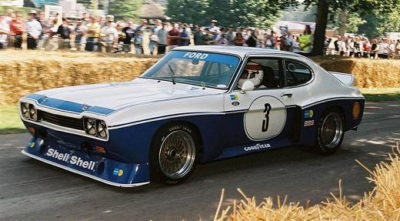
However, if you manage to find a decent Ford Capri, you don't have to worry about spare parts and service support, because a large number of parts are identical to those of Taunus, Cortina, Granada and Escort Mk I, which are still in large quantities. the price of the vehicle itself is not great. So, if you didn’t have a Capri when you were young, there’s no reason not to have one now and not enjoy the coupe you’ve always promised yourself…
Author: 426 Hemi
Pictures: Ford
Retrieved from BrzaBrzina.com
Recommendation of similar texts:

Hi there, I am Mladen and I am an auto enthusiast. I started this blog years ago to help like minded people share information about latest cars, car servicing ideas, used car info, exotic cars, and auto technology. You will find helpful articles and videos on a wide variety of cars - Audi, Mercedes, Toyota, Porsche, Volvo, BMW and much more. Ping us if you have anything cool to share on latest cars or on how to make older cars more efficient, or just want to say hi!



